Attempting to redefine the problem since I have some more information.
I am working with Angular Material (8) - along with the MDBootstrap package.
I have 2 areas. One is an area that deals with logins/authorizations (AUTH) and the other is a "dashboard" area (that is to be accessed after login) (DASHBOARD).
Here is the code that is working with AUTH and MYDASHBOARD - AUTH is being interpreted by Angular as being the primary. I named the second router-outlet definition mydashboard
app.component.html
<router-outlet></router-outlet>
<router-outlet name="mydashboard"></router-outlet>
app-routing.module.ts
const routes: Routes = [
{ path: 'auth', loadChildren: './kdc/authorization/authorization.module#AuthorizationModule' },
{ path: 'dashboard', loadChildren: './kdc/dashboard/dashboard.module#DashboardModule' },
{ path: '**' , component: PageNotFoundComponent }
];
authorization-routing.module.ts
export const routesAuth : Routes = [
{ path: 'login' , component: LoginComponent },
{ path: 'register' , component: RegisterComponent },
{ path: 'forgot-pass' , component: ForgotPasswordComponent },
];
NOTE: EVERYTHING FOR (AUTH) IS WORKING - THERE IS NOTHING WRONG WITH THIS PART. THE PROBLEM IS WITH (DASHBOARD)
After logging in, the processing goes to the dashboard. I used the code below to send it to the dashboard
login.component.ts
onLoginSubmit() {
[... snip ...]
if (this.in_results.count == 0)
this.errorMsg = 'EMail/Login ID not found';
else
// go ahead and navigate to the HOME page
this.router.navigate(['/dashboard']);
[... snip ...]
}
dashboard-routing.module.ts
const dashboardroutes: Routes = [
{ path: 'clients', component: ClientsComponent, outlet: 'contentarea' },
{ path: '', component: HomeComponent, outlet:'mydashboard' },
];
NOTE: EVERYTHING EXECUTES FINE HERE, THE DASHBOARD DOES COME UP AND IT IS STORED IN <router-outlet name="mydashboard"></router-outlet> THE PROBLEM COMES WITH USING THE MENU.
When clicking on the "Clients" area, my expectation is that the "Client Information" will be placed into <router-outlet name="contentarea"> </router-outlet> because of how home.component.html was defined.
home.component.html
[... snip ...]
<!-- Collapsible link -->
<mdb-accordion-item-body>
<ul>
<li> <a [routerLink]="[{ outlets: { primary: 'mydashboard', contentarea : 'clients' }}]" mdbWavesEffect> Press for clients</a></li>
<li><a href="#" mdbWavesEffect>Link 2</a></li>
</ul>
</mdb-accordion-item-body>
</mdb-accordion-item>
[... snip ...]
<!--Main Layout-->
<main>
<div class="container-fluid mt-5">
<router-outlet name="contentarea"> </router-outlet>
</div>
</main>
<!--/Main layout-->
[... snip ...]
NOTE:
The processing does not go to: <router-outlet name="contentarea"> </router-outlet>
INSTEAD
It goes to: <router-outlet></router-outlet> located on page: app.component.html
QUESTION: Why does it do this? Am I doing it properly? Is there a better way?
I have looked at the following pieces of documentation
https://stackoverflow.com/questions/53702674/children-routing-not-working-and-application-redirects-to-the-404-page
https://www.tektutorialshub.com/angular/angular-child-routes-nested-routes/
https://stackoverflow.com/questions/52824639/nested-router-outlet-with-name-not-working
https://www.techiediaries.com/angular-router-multiple-outlets/
https://angular.io/guide/router
but have not found anything as of yet.
Any information or ideas would be greatly appreciated.
TIA

